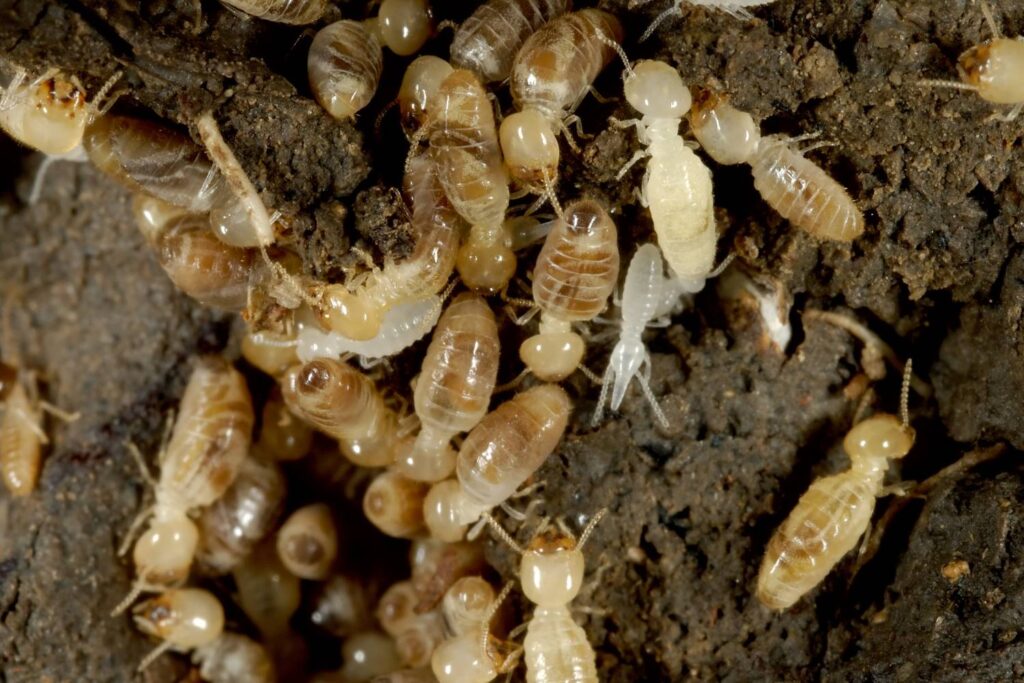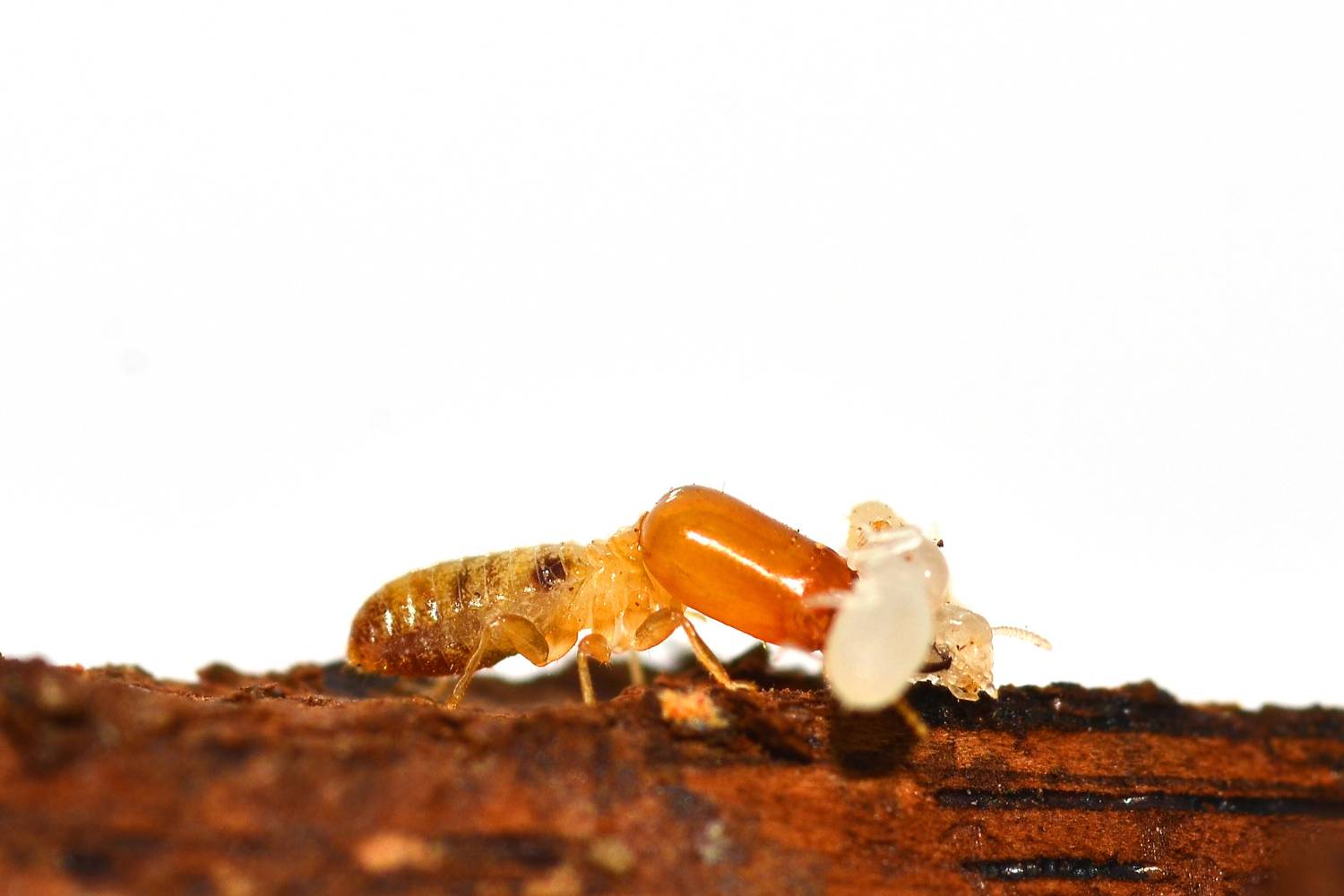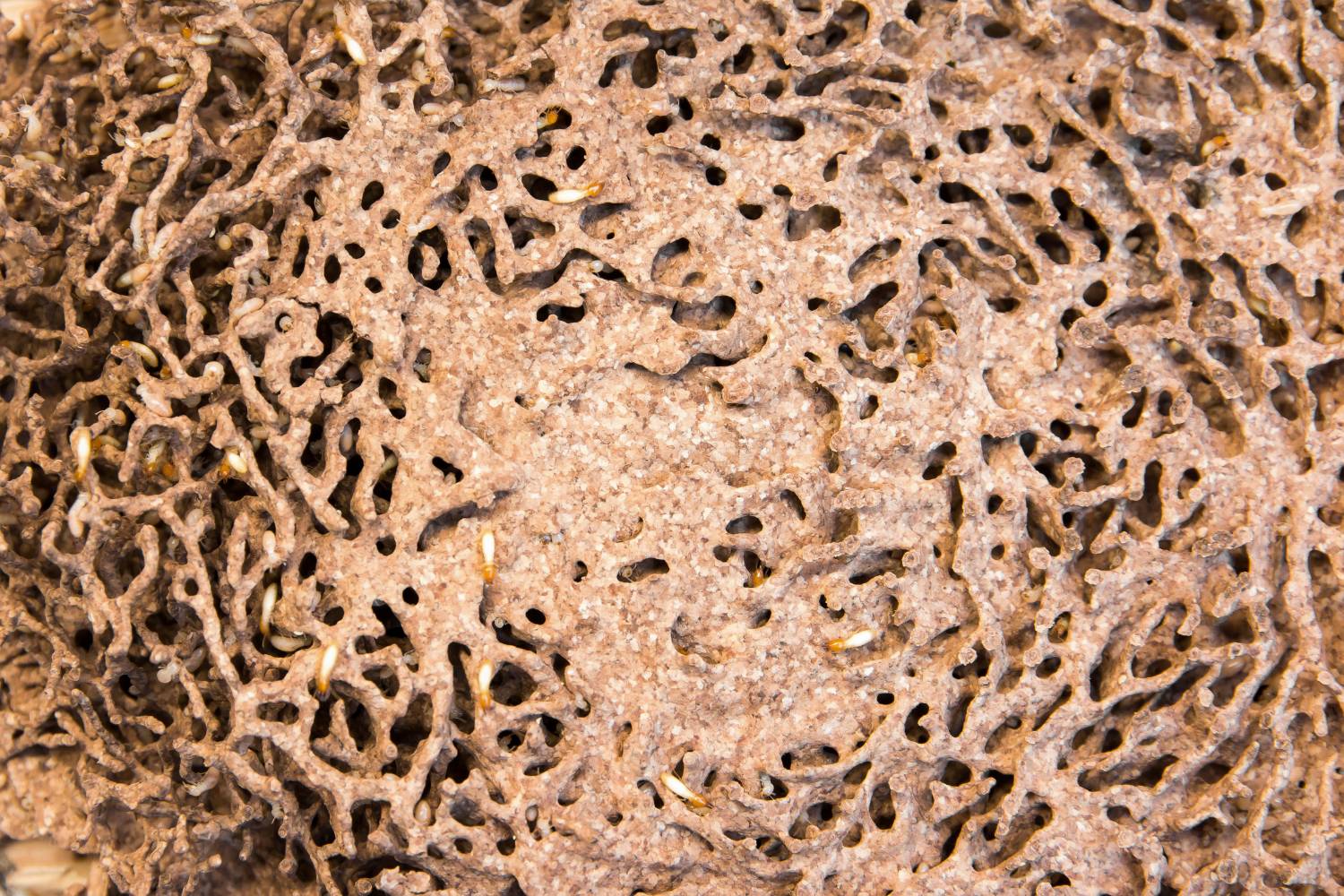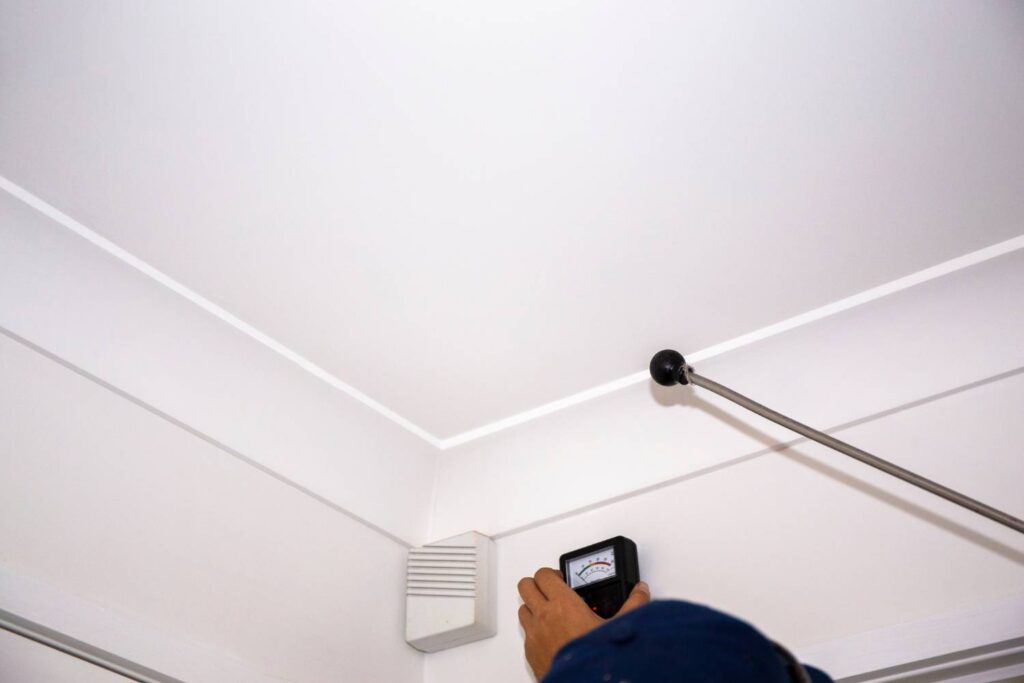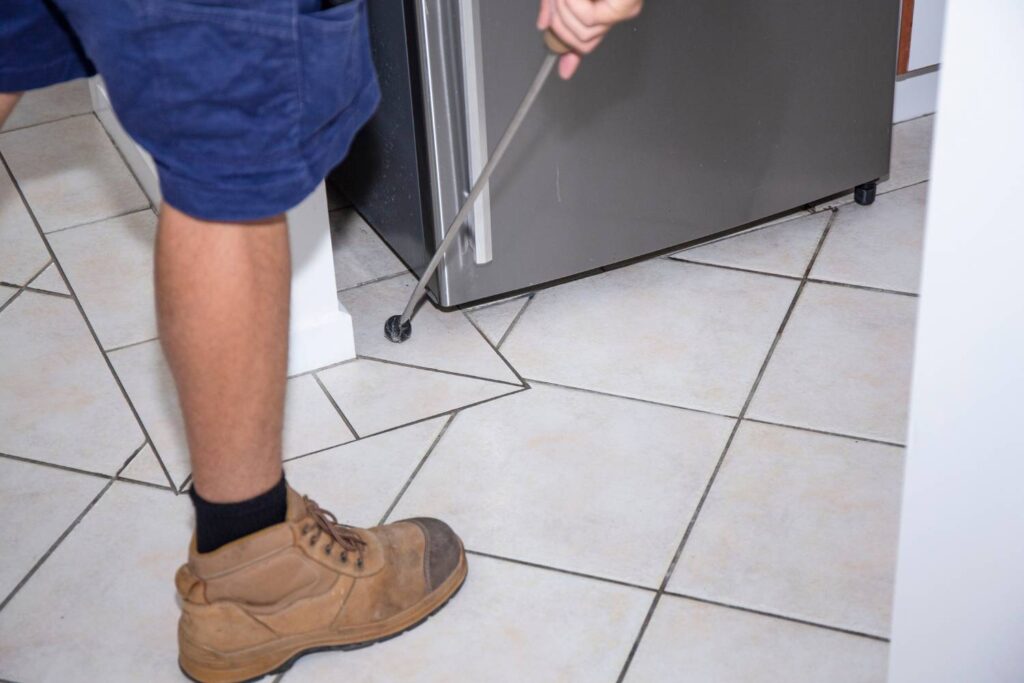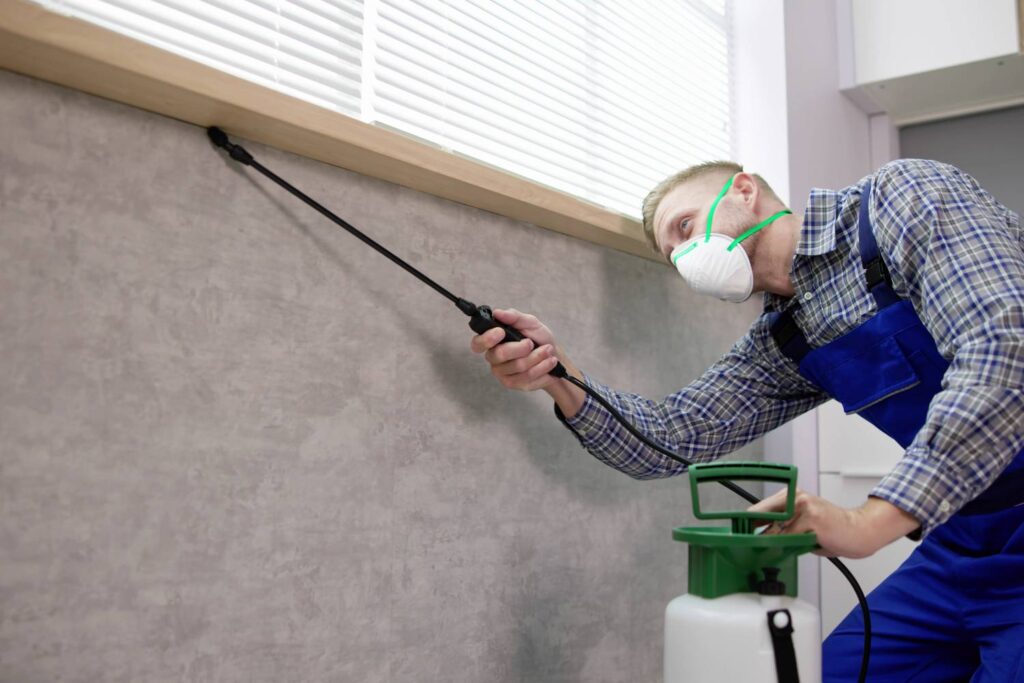Effective termite control is necessary to protect your property from these pests. Termites are horrible. Preventing a termite infestation requires diligent attention to detail and the elimination of any sources of moisture.
Termites can be a real pain, but luckily, there are ways to lessen their impact without hiring a pest control company. When protecting their houses against these harmful pests, Australians can save money and time using termite treatments. This article covers how to get rid of termites and several simple, do-it-yourself treatments for termites.
What Is Damage From Termites, And How Can I Tell If I Have It?
Termites are annoying insects that wreak havoc on homes and buildings by eating away at wood. You can keep an eye out for possible termite outbreaks once you know what to look for in terms of damage.
If you find any of the following: wood that is soft or spongy, walls or floors that are hollow, paint or wallpaper that has buckled or bubbled, mud tunnels in or around wooden buildings, little mounds of sawdust near infected areas, shed wings near window and door frames, and holes in beams and joists, you should investigate further. Observing these indications can prevent termite damage.
Does Killing Termites Yourself Work?
DIY termite treatment is a tempting prospect for homeowners who want to save money and handle the issue on their own. Remember that even for the most seasoned exterminator, dealing with termites is challenging and time-consuming.
So, it's important to study the efficacy of various approaches, such as baiting and spot treatments, before trying a do-it-yourself termite treatment. The typical householder needs to gain the specialised knowledge and tools needed for long-term effectiveness with many do-it-yourself remedies, even though they may provide temporary relief. If you're dealing with a termite infestation, it's usually best to have a professional pest control service handle it.
How do you get rid of termites on your own?
Wood is a favourite food source for termites, yet these pests are very shy. To ensure that no area of your property becomes susceptible to termites, it is crucial to conduct regular inspections.
Places with Appropriate Ventilation
Keeping your home well-ventilated is an important way to keep termites away. When there is moisture and a normal wooden house layout, termites may be able to get in. Make sure there is no dampness in any part of your home by clearing out the vents.
Fixing Gutters and Downspouts That Have Leaked
Ponding water near your home's foundation commonly results from leaking downspouts and gutters. Call a plumber to ensure the gutters are working properly and the downpipes are sealed. To prevent water from leaking into roof cavities, repair any overflows or backflows.
Take Out Rotten Wood
Tree stumps and other bits of decaying wood are an eyesore and a potential termite breeding ground. Natural termite management, which does not include equipment or products, is effective when removing decaying bits. Do not leave wood piles near your property; maintain a clean and orderly garden.
Cut Off Extra Leaves
Keep your landscape free of decaying or dead plants by keeping it neat. Termites love these wet and humid places. Plan to clean your garden regularly, or hire a gardener.
Prevent Unauthorised Access to Your Home
Make sure the outside of your property is watertight. Make sure there are no cracks that could let bugs in. Additionally, this will prevent moisture accumulation in the roof, walls, and floors.
Repair Warped Wood
Replacing damaged wood in your home is important to prevent termites from spreading. Get a pro to fix the floor, walls, roof, deck, or structure if it gets damaged. They will treat the area and safely replace the damaged part.
Verify Your Land
It is necessary to conduct routine property inspections. Termites are only sometimes easy to see or find. Check the property's structural integrity regularly and get a professional's opinion if you suspect any damage.
How to Look for Termites: Some Tips
Termite inspection in Australia: what's the deal? It is not a simple undertaking. It would help if you were on the lookout for these cunning pests because they may do a lot of harm to your house.
Termite Inspection: Why It's Crucial
To detect any termite infestations, homeowners must have termite inspections done. The best way for homeowners to detect termite infestations early and stop them is to do routine inspections.
Professionals with the necessary training and experience can detect termite activity during these checks. They will look for signs of termites by inspecting the inside and outside of the property and its walls, foundation, and any wooden constructions.
Getting a termite check is important because, if left untreated, termites can do a lot of damage to a building. These bugs eat wood, and over time, they can make a house less stable. Homeowners can avoid expensive fixes and possible safety risks by finding and treating termite infestations as soon as they are noticed.
Secure Your Assets
You must get an inspection done to keep your property safe from termites. Preventing expensive repairs and structural problems is possible with early detection and treatment of termite infestations. Termite activity can be detected through routine inspections by looking for things like:
- dirt pipes,
- ruined lumber, or
- abandoned winglets,
Enabling you to respond quickly and lessen the likelihood of serious harm. Knowing that your home is safe from these harmful bugs is another benefit of getting a termite examination.
Homeowners in regions where termites are common should prioritise termite inspections. By locating termite colonies or possible entrance points, these inspections can aid in developing effective treatment and preventive plans.
Avoid Expensive Damage
Preventing expensive damage to your property is possible with the help of termite inspections. Early detection of termite infestations allows prompt intervention to eradicate these harmful pests.
Check your home for termites regularly. You can find any evidence of their activity—like mud tubes, damaged wood, or discarded wings—and take immediate action to fix the problem or prevent it from getting worse.
In addition to protecting your house or building's structural integrity, termite inspections can save money by avoiding costly repairs. Termites are a major threat to the security and stability of timber buildings because of the extensive damage they may inflict. You can keep your property in good structural condition and save money on renovations and repairs by scheduling termite inspections regularly.
Symptoms of a Termite Problem
Homeowners should prioritise regularly getting a termite inspection done to detect any signs of termite infestation. Inspecting homes regularly can help homeowners spot termite activity indicators like mud tubes, abandoned wings, or timber that sounds hollow. Homeowners can take prompt action to stop additional damage and expensive repairs with the help of these inspections. Knowing that their property is safe from these harmful bugs is another benefit of having a termite check.
Wood with a Hollow Sound
A termite infestation may be indicated when tapping on wood produces a hollow sound. A common cause of wood that sounds hollow is termite damage, which leaves a thin layer on the surface but consumes the wood within. This can indicate a termite infestation or a weakening of the wood structure. Get a professional inspection done if you hear a hollow sound when you tap on wood in your house or property; this could be a sign of termites.
Unused Wings
If you find discarded wings, it's a sign of a termite infestation. Termites' wings are common around entry points such as window sills, door frames, and the like. Discarded wings signify that a termite colony has settled down and is busy laying eggs. Preventing additional damage to the structure requires prompt action during a termite infestation.
Mud Tubes
Mud tubes, constructed by termites from soil and saliva, are a telltale sign of an infestation. These tunnels lead termites from their nests to food sources. These mud tubes, which are usually around a pencil's width, are common in crawl spaces, along building foundations, and even on walls. The termites use them as a cover to get at the wood or other cellulose elements in the structure without anyone noticing.
DIY Termite Treatment Pros and Cons
Termites are diminutive arthropods capable of inflicting substantial structural harm upon a dwelling. These wood-eating vermin may remain undetected for an extended period, consuming your property's foundation, walls, and support beams.
The do-it-yourself (DIY) method is one of several available to homeowners for termite treatment and management.
Pros Of DIY Termite Treatment
Termites are one of the most annoying pests for homeowners. Without treatment, these harmful pests can wreak havoc on your land. Though some companies offer termite treatment services, many homeowners choose to tackle the problem on their own. There are several good reasons why.
Let's look at the benefits of termite treatment that you can do on your own, including how it can help you save money and feel more in charge of the problem.
Cost-Effectiveness
- Saving money on professional services – If you want to save money, you can cure termites independently instead of paying a professional. Instead of shelling out big bucks for pricey treatments, you may put that money towards treatment supplies and equipment.
- Availability of affordable treatment options – Many do-it-yourself termite treatments, such as foams, bait stations, and sprays, are readily available and reasonably priced. These goods have varied pricing points, so you can choose one that fits your budget. If you take your time choosing the product and follow the directions to the letter, you can successfully treat the termite infestation without breaking the bank.
Convenience & Flexibility
- DIY treatments can be done on your schedule – Do-it-yourself termite treatments allow you to respond quickly when detecting termite activity. You may take immediate action with DIY remedies, avoiding additional harm to your property, in contrast to professional services that require scheduling and coordination.
- No need to wait for professional appointments – If you treat your property for termites on your own, you won't have to wait for professional exterminators, which means the infestation won't grow as quickly, and your property will be safer. You can choose when and how to tackle the infestation to save your property.
Empowerment & Learning
- Acquiring knowledge about termite behaviour and treatment methods – You can learn much about termites, their lifecycle, and how to treat them effectively if you do it yourself. You can learn their habits, spot the telltale indications of an infestation, and employ effective treatment methods by reading up on the subject.
- Feel empowered by taking control of the situation. You get command of your property and self-assurance when you cure termites alone. Taking an active role rather than depending on experts might help reduce anxiety and give you a sense of empowerment.
Immediate Action
- DIY treatments allow for quick response to termite infestations. When you treat termites on your own, you can react quickly when you see any activity, stopping the infestation in its tracks and limiting the damage to your property. You no longer need to put off treatment; expert assistance is at your fingertips.
- Minimising potential damage to property – Getting rid of termite infestations quickly with do-it-yourself methods can help avoid damage and expensive fixes. Taking action immediately stops the damage to your home's structure from worsening, saving you money on fixes in the long run.
Homeowners can save money, more freedom, and time by treating termites themselves. It allows you to be proactive and educates you on termite control strategies. But before you do it yourself, figure out how bad it is and how much you know. For complete removal and maintenance of control, it may be required to consult an expert.
Cons Of DIY Termite Treatment
While there are benefits to doing your termite treatment, you should weigh those against any possible downsides before you do it. Make a more educated judgement about whether DIY treatment is appropriate for your case if you know the drawbacks. We will examine the drawbacks of termite treatment that you do yourself.
Limited Effectiveness
- Lack of specialised knowledge and equipment – Professional pest control experts know how to find termite colonies hidden in walls or foundations and have state-of-the-art tools. Do-it-yourself treatments might not get to these hidden infestations, so you risk not getting rid of them completely.
- Inability to treat severe or widespread infestations – Most do-it-yourself treatments are for small to large infestations. If you have a big or broad termite problem, you might not be able to get rid of them on your own. Professional exterminators know how to handle these cases well because they have the training and tools.
Safety Concerns
- Incorrect handling of chemicals and potential health risks – The chemicals in many do-it-yourself termite treatment treatments pose a health risk if not applied correctly. Incorrect application or exposure could cause health problems for you, your family, or your pets if you don't have the proper training and experience.
- Hazards associated with structural modifications or repairs – Modifications or structural repairs may be necessary for some do-it-yourself treatments to combat termite activity. The structural integrity of your home could be jeopardised if you attempt to modify it improperly without seeking professional advice. Additional future safety issues and expensive maintenance may be the consequence of this.
Time And Effort
- DIY treatments may require significant time and effort – Do-it-yourself termite treatments require a lot of time. Research, product selection, application, and monitoring all take a considerable amount of time and energy. Finding a happy medium between these obligations and other commitments can be tough.
- Balancing treatment with other responsibilities – The efficacy of a do-it-yourself termite treatment depends on regular monitoring and follow-up. It can be difficult and even daunting to juggle all these things with your regular work, family, and other commitments.
Lack Of Guarantees
- No professional warranties or guarantees for DIY treatments – Expert termite removal services guarantee successful treatment and take care of any reoccurring infestations. They also offer warranties or guarantees. These assurances are absent from DIY treatments, leaving you liable for potential future termite problems.
- Possibility of recurring infestations or incomplete eradication – When you don't have the proper training or experience, treating pests alone could lead to ineffective treatment and subsequent infestations. Do-it-yourself approaches might not be able to eliminate termites, leaving your house open to more harm down the road.
The benefits of DIY termite treatment must be considered with these drawbacks. Call the pros if you're dealing with a serious infestation, don't have the right tools, are worried about safety, or want assurances.
Conclusion
Termites are very bad bugs that destroy buildings and homes by eating away at wood. Homeowners can use do-it-yourself termite treatments like baiting and spot treatments to keep termites away, but it's important to research how well these methods work before you try them.
Termite infestations can be avoided by checking the property often, making sure there is enough air flow, fixing gutters and downspouts that leak, getting rid of rotting wood, cutting off extra leaves, keeping people from getting into the house without permission, and fixing wood that is warped. Also, it's important to have regular property checks to make sure the building is sound and to avoid costly repairs and safety risks.
Termite checks are necessary to find and stop termite infestations as soon as possible. During these checks, professionals with the right training and experience can find termite activity by looking at the walls, base, and wooden structures inside and outside the home. Termites can do a lot of damage to a building and make it less stable if they are not handled.
In the end, people who own their own homes should be aware of termite invasions and take action to keep them from damaging their property. Homeowners can get rid of termites and keep their homes safe by using these tips and tricks.
Getting termite inspections is important for keeping your home safe and avoiding expensive fixes and structural issues. Termite activity can be found through regular inspections, which can find things like dirt pipes, rotting wood, or abandoned winglets. This lets you move quickly and lowers the risk of serious damage. Homeowners in areas where termites are popular should make termite inspections a top priority so they can come up with effective ways to treat and prevent termites.
Termite outbreaks can be found by finding mud tubes, wings that have been left behind, or wood that sounds hollow. These signs could mean that termites are in the house or that the wood structure is getting weaker. If you tap on wood and hear an empty sound, it could mean that termites have eaten it. Termite wings that have been thrown away show that a colony has settled down and is laying eggs. Termites build mud tubes out of dirt and saliva, which is a clear sign that they have an infestation.
There are many benefits to treating termites yourself, such as saving money, having access to cheap treatment options, being convenient, and being able to change your mind at any time. Doing your own termite treatment can save you money on professional services, give you more treatment choices, and make you feel like you're in charge of the problem. Homeowners can protect their property's structure and avoid expensive repairs by having termite checks done on a regular basis.
Do-it-yourself termite treatments have many benefits, such as letting you act right away, giving you more power, and teaching you about how termites behave. These treatments give homeowners control over their property and a sense of power, which lowers worry and gives people a sense of control.
There are some problems with do-it-yourself termite treatments, though. They don't always work, you might not have the right tools or knowledge, you might not be able to treat serious or widespread infestations, you might not be safe, and making changes or repairs to the structure could be dangerous.
Do-it-yourself treatments may take a lot of time and work because you have to do study, choose products, apply them, and keep an eye on them. It can be hard to fit treatment into other schedules because a do-it-yourself termite treatment only works if it is regularly checked on and followed up on.
Also, do-it-yourself treatments don't come with professional promises or guarantees because professionals don't offer those. Homeowners are now responsible for any pest problems that might happen in the future.
Lastly, do-it-yourself treatments may not get rid of all termite problems because they may not work on their own. If you have a major infestation, don't have the right tools, are worried about safety, or just want to be sure, you may need to talk to a professional to get rid of the pests completely and keep them under control.
Content Summary
- Effective termite control is crucial for protecting properties from damage.
- Termites cause significant harm by eating away at wood in homes and buildings.
- Homeowners can perform DIY termite inspections and treatments to save money.
- Identifying termite damage involves looking for softwood, hollow walls, and mud tunnels.
- DIY termite treatments can offer temporary relief but may lack long-term effectiveness.
- Professional pest control services are recommended for dealing with severe infestations.
- Regular property inspections are vital for early detection of termite presence.
- Ensuring proper ventilation in homes can help prevent termite infestations.
- Fixing leaks in gutters and downspouts is essential to avoid attracting termites.
- Removing decaying wood and tree stumps can reduce termite breeding grounds.
- Maintaining a clean garden by removing excess leaves can deter termites.
- Sealing cracks and crevices in the home's exterior can prevent termite entry.
- Replacing damaged wood promptly can help stop termites from spreading.
- Conducting routine inspections helps maintain the structural integrity of properties.
- Professional termite inspections are crucial for detecting infestations early.
- Termite inspections can prevent costly repairs and ensure home safety.
- Homeowners in termite-prone areas should prioritise termite inspections.
- Early detection of termites through inspections can save homeowners money.
- Signs of termite activity include mud tubes, discarded wings, and hollow-sounding wood.
- Discarded termite wings indicate that a colony is nearby and potentially damaging the structure.
- Mud tubes are a clear sign of termite infestations, used by termites to travel to food sources.
- DIY termite treatments can be cost-effective and convenient for homeowners.
- Many affordable and accessible DIY termite treatment options are available.
- DIY treatments allow homeowners to act immediately upon detecting termites.
- Learning about termite behaviour through DIY efforts can empower homeowners.
- Immediate action against termites can minimise potential property damage.
- However, DIY treatments may not always provide a long-term solution to termite problems.
- Professional extermination services have the expertise to handle severe infestations.
- Homeowners should assess the severity of the infestation before attempting DIY treatments.
- Understanding the pros and cons of DIY termite treatment is essential for effective pest control.
- The availability of various DIY treatment products gives homeowners options to suit their budget.
- Homeowners can schedule DIY treatments at their convenience without waiting for professional availability.
- Conducting termite treatments oneself can provide a sense of control over the pest problem.
- Knowledge gained from DIY termite treatment efforts can be valuable for future pest management.
- Quick response to termite sightings with DIY methods can protect the property from further damage.
- Regularly cleaning up garden waste can reduce habitats for termites.
- Ensuring the home's foundation and exterior are moisture-free is key to termite prevention.
- Professional inspections can reveal hidden termite activity not easily spotted by homeowners.
- The structural stability of a home can be compromised by unchecked termite damage.
- Termites prefer environments that provide moisture and shelter, which can be minimised with proper home maintenance.
- Identifying and treating termite infestations early can prevent extensive and expensive damage.
- Homeowners should be proactive in learning about termite prevention and treatment strategies.
- The decision between DIY and professional termite treatment depends on individual circumstances and infestation severity.
- Effective termite control involves a combination of preventive measures and timely treatment.
- Regular monitoring and maintenance of the home can deter termite infestations.
- Sealing up entry points and fixing moisture issues are critical steps in termite prevention.
- Removing potential termite food sources, like dead trees and wood debris, can reduce risk.
- Professional termite treatments offer the advantage of specialised knowledge and equipment.
- Educating oneself about termite signs and treatments can enhance DIY termite control efforts.
- Ultimately, protecting a home from termites requires vigilance, prompt action, and, when necessary, professional intervention.
Frequently Asked Questions
The duration of a DIY termite inspection depends on the size of the property and the thoroughness of the inspection, but it generally takes a few hours to complete.
Homeowners should disclose any known termite activity or damage discovered during DIY inspections, as failure could result in legal liabilities.
Numerous online resources, articles, and videos provide guidance and tips for conducting DIY termite inspections.
Homeowners should explore financing options or contact local government agencies for assistance with termite treatment and remediation programs.
Homeowners should stay informed about termite behaviour, regularly update their knowledge and skills, and remain vigilant in monitoring their homes for signs of termite activity.

